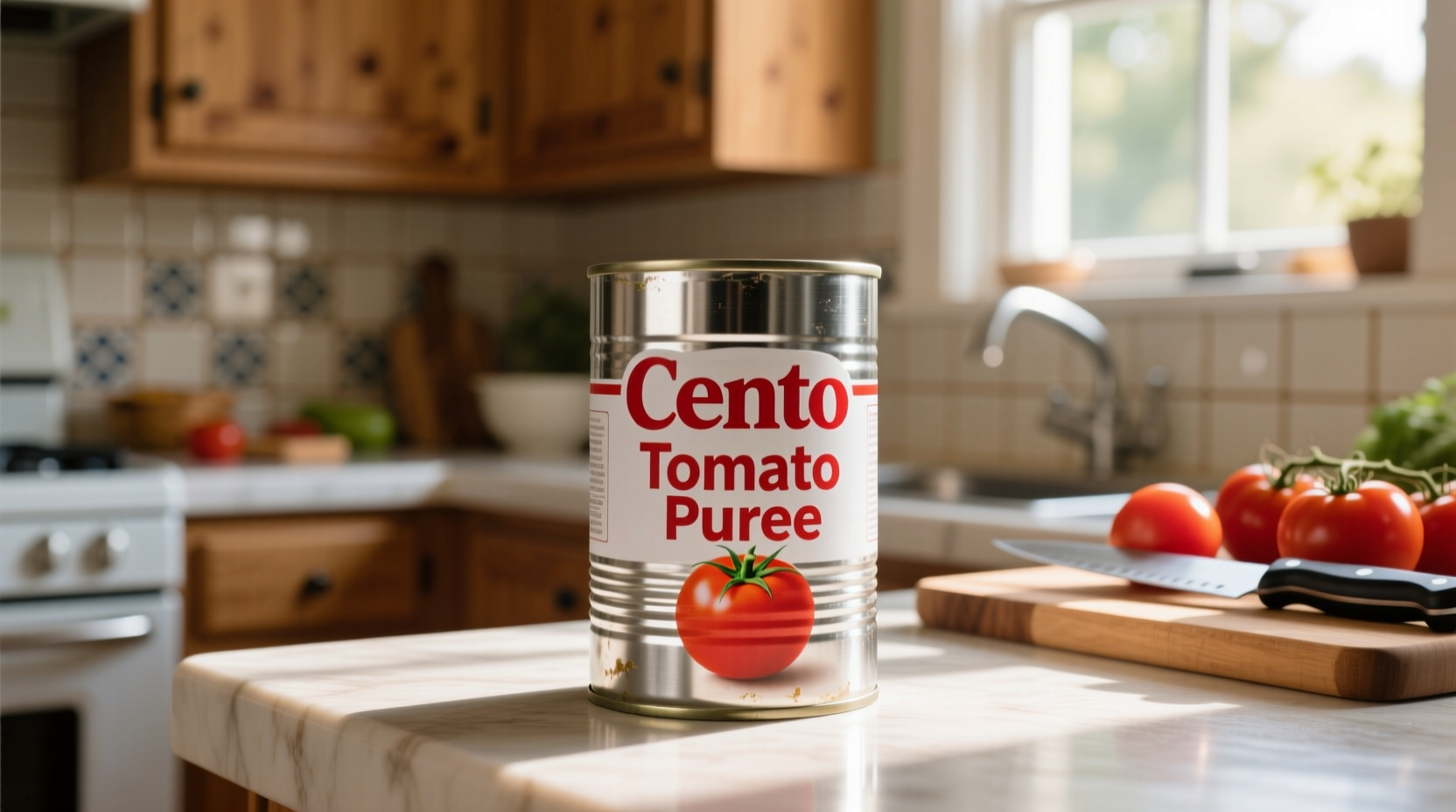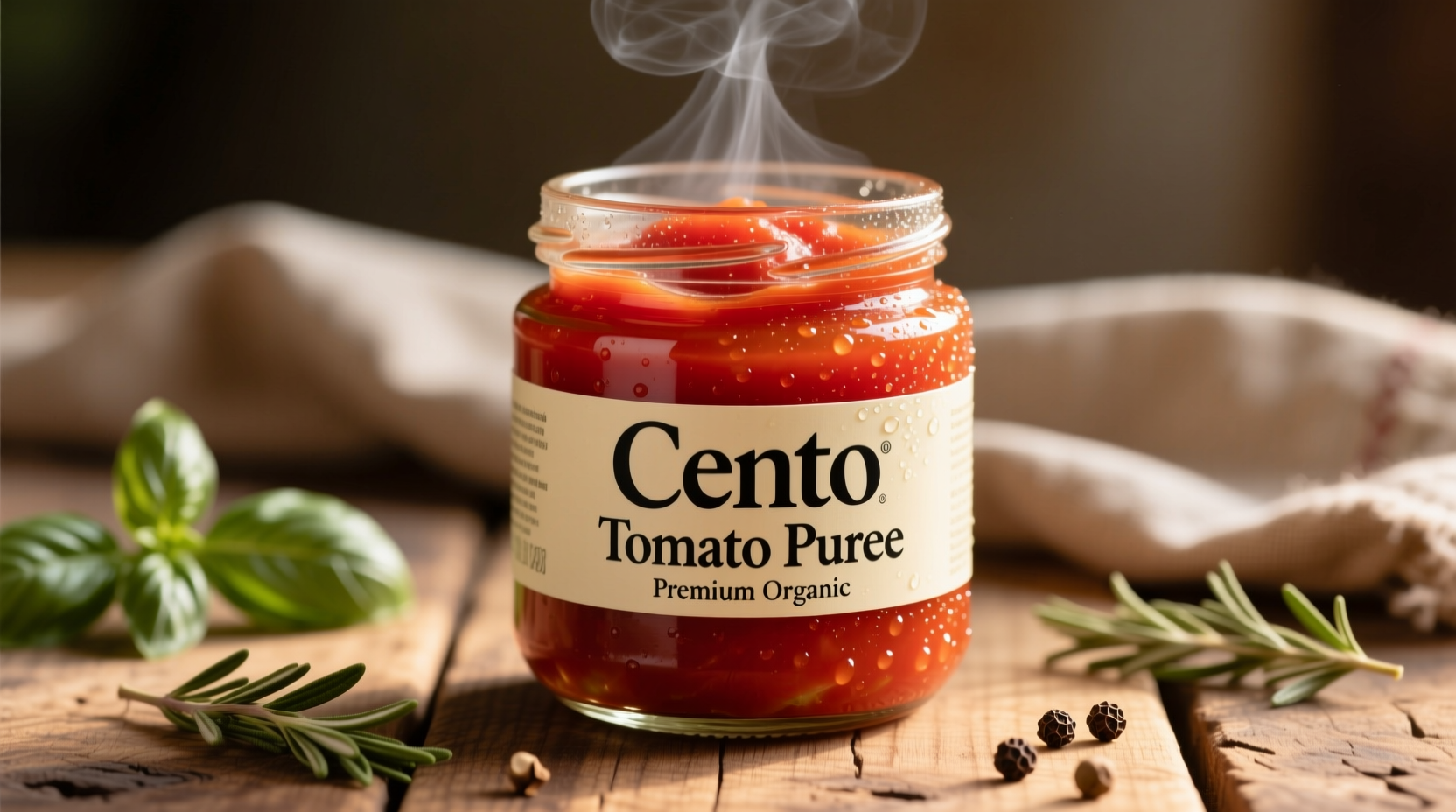When you reach for a can of tomato product, understanding exactly what you're working with can transform your cooking. Cento tomato puree stands apart as a versatile pantry staple that professional chefs and home cooks rely on for consistent results. Unlike many commercial alternatives, this Italian-style puree maintains the natural sweetness and acidity of ripe tomatoes without unnecessary additives.
What Makes Cento Tomato Puree Different
At its core, Cento tomato puree is simply tomatoes that have been cooked down and strained to create a smooth, thick liquid. The key distinction lies in Cento's production process. Sourced from vine-ripened tomatoes grown in optimal Mediterranean conditions, the puree undergoes minimal processing to preserve the fruit's natural characteristics.
According to USDA FoodData Central, tomato puree typically contains about 50-70 calories per cup, with significant amounts of vitamin C, potassium, and lycopene—a powerful antioxidant. Cento's version maintains these nutritional benefits while delivering a cleaner ingredient profile than many competitors.

Understanding Tomato Product Differences
Confusion between tomato products creates one of the most common kitchen frustrations. Let's clarify how Cento tomato puree compares to similar products:
| Product Type | Texture | Tomato Solids | Best Culinary Uses |
|---|---|---|---|
| Cento Tomato Puree | Smooth, pourable liquid | 8-10% | Sauces, soups, stews |
| Tomato Paste | Thick, concentrated | 24-30% | Flavor base, small additions |
| Crushed Tomatoes | Chunky with pieces | 8-10% | Pasta sauces, chili |
| Tomato Sauce | Thin, seasoned liquid | 5-8% | Ready-to-use sauces |
This comparison reveals why substitution mistakes happen. Using tomato paste when a recipe calls for puree creates an overly concentrated flavor, while crushed tomatoes add unwanted texture to smooth sauces.
Practical Applications in Your Kitchen
Cento tomato puree shines in applications where you want tomato flavor without competing elements. Professional chefs appreciate its clean profile because it serves as a blank canvas they can build upon.
When making a basic tomato sauce, start with one cup of Cento tomato puree as your foundation. The puree's natural consistency means you won't need to reduce liquid as much as with crushed tomatoes. For richer flavor development, sauté aromatics first, then add the puree and simmer gently for 20-30 minutes.
Food science research from the Journal of Food Science shows that cooking tomatoes actually increases their lycopene bioavailability by up to 35%. This means your body can absorb more of this beneficial antioxidant when you use cooked tomato products like puree rather than raw tomatoes.
Storage Guidelines and Shelf Life
Proper storage maintains quality and prevents waste. Unopened cans of Cento tomato puree typically remain at peak quality for 18-24 months when stored in a cool, dry place. Once opened, transfer unused portions to an airtight container and refrigerate.
The National Center for Home Food Preservation recommends using opened tomato puree within 5-7 days. For longer storage, freeze in ice cube trays then transfer frozen cubes to freezer bags—this portioning method lets you use exactly what you need for future recipes.
Recipe Integration Tips
Maximize flavor by understanding how Cento tomato puree interacts with other ingredients. The natural acidity balances rich meats in braises, while its sweetness complements spicy elements in dishes like arrabbiata sauce.
When substituting in recipes, remember that one cup of tomato puree generally equals three-quarters cup of tomato paste thinned with water. For tomato sauce, you'll need to add seasonings as Cento puree contains no added herbs or salt.
Chef-tested applications show that adding puree at the beginning of cooking develops deeper flavor than adding it later. This timing allows the sugars to caramelize slightly and the acids to mellow through prolonged heating.
Frequently Asked Questions
Many home cooks have specific questions about using Cento tomato puree effectively:











 浙公网安备
33010002000092号
浙公网安备
33010002000092号 浙B2-20120091-4
浙B2-20120091-4